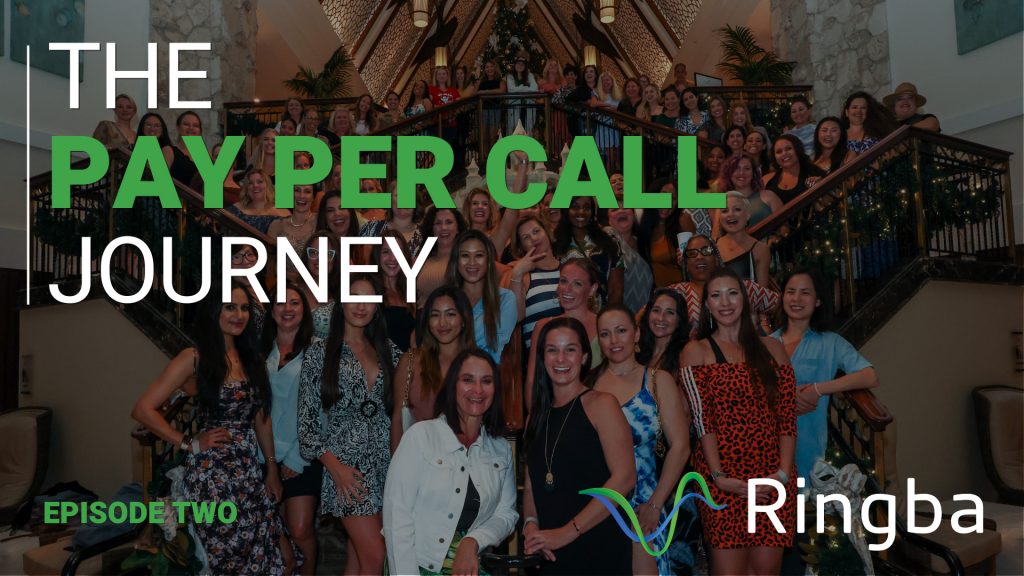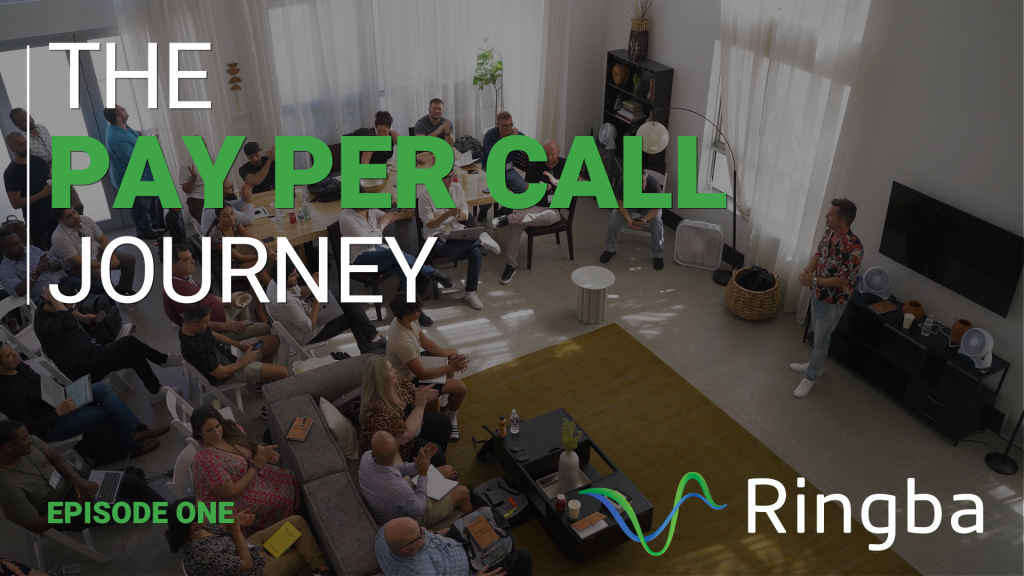Learn to write irresistible ad copy by using consumer psychology to get results and generate calls.
Contents:
– The Psychology of Advertising for Pay Per Call
– Using Plutchik’s Wheel of Emotion
– Emotional Options
– Cause and Effect
– Emotional Combinations
– Copywriting for Pay Per Call
– Negative Emotion Words
– Creating Negative Emotions
– Positive Emotion Words
– Creating Positive Emotions
– Combining Phrases for Short Form Copy
– Combining Phrases for Long Form Copy
– Using and Finding Images for Creating Emotions
The Psychology of Advertising for Pay Per Call
Purchasing decisions and decisions by consumers to take action are almost always driven by emotions. People don’t typically pick up the phone and make a phone call or buy something or change their behavior unless they feel a reason to do it.
Some people are very logical, and they make rational decisions, but emotions also drive their purchasing decisions. As marketers, it’s our goal to trigger an emotion in somebody to get them to take action. Selling features is a recipe for failure. That doesn’t get people excited. It doesn’t get people to connect with your brand. It doesn’t get people to want to take action. That’s we’re trying to do, effectively, as marketers, is to get people to take action.
As humans, we have lots of experiences, positive and negative, and we all share experiences in that way. For instance, we all feel the same way about going to the DMV. It’s not fun. It’s not a pleasant experience. If anyone wants to reference the emotions and disappointment and disgust we feel towards the DMV, all they have to do is trigger a memory of the DMV in our minds, and then we feel those emotions.
As marketers, we’re effectively miners of memories, and what we’re trying to do is bring previously felt feelings to the forefront of our audience’s consciousness so that they feel those things again. People are bombarded with all sorts of imagery and all sorts of music and all sorts of video and text and everything when they watch TV and movies, and they’re on the internet, or they’re Instagramming or whatever they’re doing. They’re creating memories and feelings, and it’s our job, as marketers, to tap into those and get them to feel when we want them to make a purchase or pick up the phone and call.
Using Plutchik’s Wheel of Emotion
A psychologist named Robert Plutchik came up with the Wheel of Emotion. What he posited is that there are base emotions and that we feel different levels of that base emotion and combine feelings together, similar to mixing colors, to get other emotions. For instance, at the root of annoyance, we have rage, and at the heart of acceptance, we have admiration. At the root of serenity and joy, we have ecstasy. As you can see, at the center, we have a potent combination of emotions. For the most part, there are some negative emotions woven in there. Like I said before, any time we can cause someone to feel a negative emotion, we are significantly more likely to get them to take action or respond to our advertising in some way.
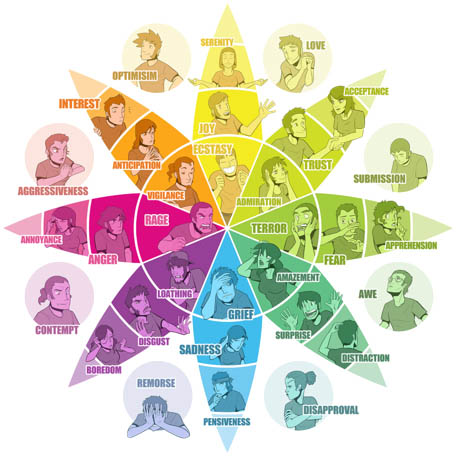
Emotional Options
Plutchik’s wheel is too simplistic for actually writing ad copy. We went out, and we put together something that is far more robust. It doesn’t exactly match Plutchik’s wheel, but in this wheel, there are over 100 different emotions that people feel and then root emotions that sort of tie it all together. We’re going to use this wheel whenever we craft advertisements. You don’t have to understand the psychology of advertising to correctly write ad copy and create ads that work if you have resources and a process.

Cause and Effect
Every single emotion that a human feels has a cause and effect. The first thing that happens as a human is we get some stimulus. That’s the stimulus event. Then our subconscious, the part of our brain that’s driving that we don’t control, does an appraisal of that stimulus event. It decides, “Hey, whoa, what was that and what are we gonna do about it? How do we need to feel about dealing with that?”
Then, our subconscious fires off a subjective reaction. It decides, “Is this good? Is that bad? Is it fear? Is it a surprise? Should we be sad? How are we supposed to feel?” That is a rote process. We don’t have control over it. We can control our emotions, but that’s mostly controlling how we react to them, not the raw emotion. Our subconscious takes over and fires these things off at us, and then we’re just left to navigate and figure out what they are.
After we have our subjective reaction, after we feel the emotion, then we modify our behavior. What humans do is they feel the emotion, it bubbles up, we’re like, “Oh, my gosh!” and then we decide to change our behavior, based on that emotion and subsequently our subconscious has achieved its goal of, usually, a function. We call it a function. It’s a defense mechanism — a different outcome.

Let’s say that we’re shopping. We’re shopping, and we see something where it lights up gold, and we’re like, “Ah! I have to have that!” so, the cognitive appraisal that happens is we need to possess it, and then our body feels joy once we start considering purchasing it. We’re like, “Oh, my gosh, this is gonna make me feel amazing. That is gonna make me look great.” Whatever it is, the emotion starts flowing, and that’s when they got you.
The behavioral reaction is our prefrontal cortex. It decides, “Are we gonna rein that emotion in or are we gonna repeat it and let ourselves just splash around in the joy?” or whatever it is. The function of that joy is like, “Okay, yeah!” I’m justifying to myself. “I need to make that purchase. I’m gonna gain a resource, or I’m gonna possess an object.” That’s the actual process that we go through when we’re out shopping at the mall or are browsing the internet. We see something, and we’re like, “I’ve gotta have it,” and then we buy it.
Emotional Combinations
Different emotions have different combinations of root emotions. Similar to how blue and yellow make green when you’re mixing paints, or you’re drawing, the same thing happens for emotions. Most emotions that we describe, and we describe them so eloquently, it’s just multiple streams of emotions that are converging differently.

When we feel love, that’s a combination of joy and trust. Those two things come together, and we love someone. We trust them with our future. They bring us joy. When we see them, we’re super happy. There are combinations.
Guilt is joy and fear. When you feel guilty about something, you feel like you’ve negatively affected someone else, it’s a combination of that fear but also joy because you want to feel good about the situation and you feel like you’ve done something wrong. Which is interesting when you think about it because if you know what emotions combine to get something you want, you can create it through very thoughtful communication. That’s verbal, nonverbal, written, or imagery or videos, music, or a combination of all of the above.
It’s that simple. That’s what we’re doing. We’re trying to figure out who are prospects are. Now, in some campaigns, like plumbing campaigns, like, “My sink is overflowing,” that can be anyone, but it’s probably gonna be someone who’s out on their own who’s a homeowner, so you’re probably talking 25+, male, female, whatever. If the value of the calls is higher if they own their own home, you can skew it to an older audience because the older someone gets, they have a higher propensity of owning their own home. You have to test, but you need to determine what your audience segment is so that you can approach it.
Copywriting for Pay Per Call
You need to put yourself in the mind of a prospect. Who calls for plumbing help? What is that person like at the very moment? How do you do that? How do you think that way? Okay. Well, I’m standing in my kitchen right now, and I’m visualizing it as I’m talking. I’m looking out the window, and I’m doing some dishes, scrubbing some dishes, and then all of a sudden, I reach up to grab the faucet, it breaks off, and water starts shooting out into the air. Like, all over the window, all over the wall. I try to stop. I try to plug it. I grab a towel. I’m trying to shove it in there. I’m like, “Oh, my gosh, water is going everywhere! What am I gonna do?” What am I doing? I’m panicking! Fear! Panic! Anxiety! Uncertainty! Like, “Oh, my gosh! Crap! My house is going to flood! My neighbors below me are going to freak out. I need to call a plumber. I need to call the building. What am I going to do?
It’s not that hard to do; you have to sit down and think about it. Most people aren’t sitting down and thinking about it. That is why most people fail at affiliate marketing. I mean, effectively, if you give me any affiliate campaign and then look at the copy that’s out there, all you have to do is change the copy to take it from not profitable to profitable. That’s because it’s how you communicate to the group of people so that they can relate to it and feel something, get that emotional reaction to get them to take action.
Let’s do a debt consolidation example. We have our wheel of emotions here. So, if you aren’t able to digest everything mentioned, let’s only use it practically.
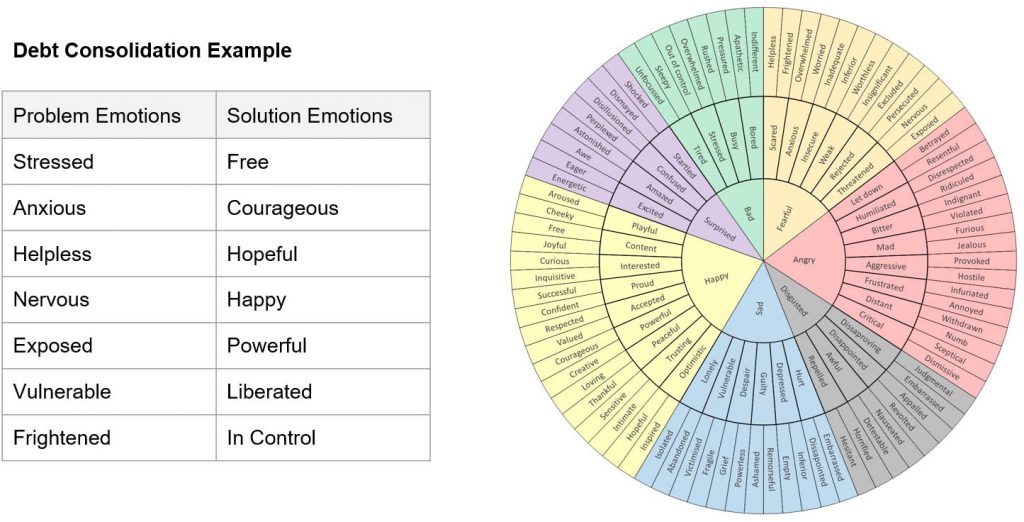
How does someone who has a lot of debt feel when they think about their debt? People don’t like debt. It’s a negative emotion. Do they like what we’re talking about? That’s how you determine if it’s positive or negative. I guess some people like debt. I think billionaires like debt because they can leverage it to take over countries or whatever. But for the average person, debt is a problem. Problem? Inherently negative.
So, what emotions do they feel when they think about their debt? That is a simple example. It doesn’t just have to be, what do I have here? Seven? It doesn’t have to be only seven. It could be 15 or 20, depending on how deep you want to get into this. As you optimize your campaigns and massage out new stories into your campaigns and change the ad copy, you’re going to want to do a lot more than seven. We’re just going to do seven so that you can understand the process and then you can figure out the rest on your own.
Now, with debt, we’re not just selling the problem, though. We’re not selling the problem, at all. We’re selling a solution. But in a debt campaign or any campaign where someone’s in a negative situation, and you want to get that person to a positive one, you need to make them feel twice. First, you need to present the problem, and then you need to sell the solution. That’s how you generate a lot of profit.
Negative Emotion Words
All we have to do is take these negative emotions we want someone to feel and write words that trigger those emotions. You have to put yourself into the mindset of the person that you’re trying to influence. Then, you say these words out loud, pretending that you’re in debt, and see if you can trigger an emotion in yourself.
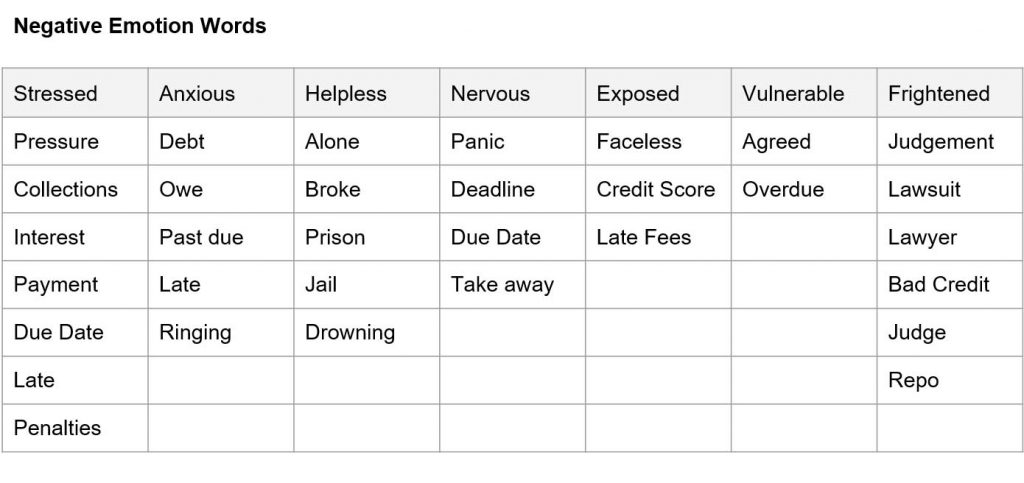
That’s what I did. I sat down, and I was like, “Alright, how do I make myself feel stressed? Ooh, collectors. Ugh. Interest, oh!” I hate interest. Interest is shackled. Interest is just, ugh! Payments and due dates, late fees, oh, my gosh! I’m never late for anything. Just the word “late” scares the crap out of me. Penalties. I allow myself, even though I’m varying control of my emotions to feel this stuff when I write the words. I’m like, “Okay. That will trigger emotions in people that have a lot of debt.”
That’s it! I don’t, so I have to put myself in that person’s shoes. So, if you don’t have a lot of debt or you’ve never had collectors calling you, you will not quite understand. You have to try and put yourself in those shoes. What does it feel like? How do they do it?
Creating Negative Emotions
I took the words for each of these emotions and put them in a sentence that was describing a feeling. “Crushing pressure of due dates, late fees, interest, and penalties.” That’s a trigger sentence. That’s going to cause someone to feel something.
Anxious. Your phone is ringing off the hook, knowing you can’t answer. Anxious and helpless and so that’s going to trigger an emotion. Your phone is ringing off the hook, knowing you can’t answer. Anyone that’s in debt and overdue is getting called by collectors and their phone rings, and it’s anonymous, or they can’t answer it because they’re around friends and family. So, they can’t take the call. They end the call. They put it back in their pocket, and they’re all anxious. We can have someone re-live that memory in just a short sentence by saying it.

Now, it won’t work for everybody. That’s why everyone doesn’t click. But this is a common theme and memory of people that have debt, and so we can trigger that memory and get them to think about their debt by triggering that memory.
Positive Emotion Words
We also need the other side of it because we need to be able to communicate that we are the solution. Freedom. What’s freedom? Zero dollars due, no debt, on time, options. I can choose my future. Future! It’s going to be bright! My future’s going to be amazing! I’m courageous. I paid off my bills. I fought, and I won, and I took back my life. That’s being courageous. Hopeful. Reducing, lowering, getting relief, lifting the weight off my shoulders. Debt-free that made me happy. What other words? Smile, dance, happy-type events. Being free, being able to meet with friends and family and take people out. Do what you want to do. Live your life.
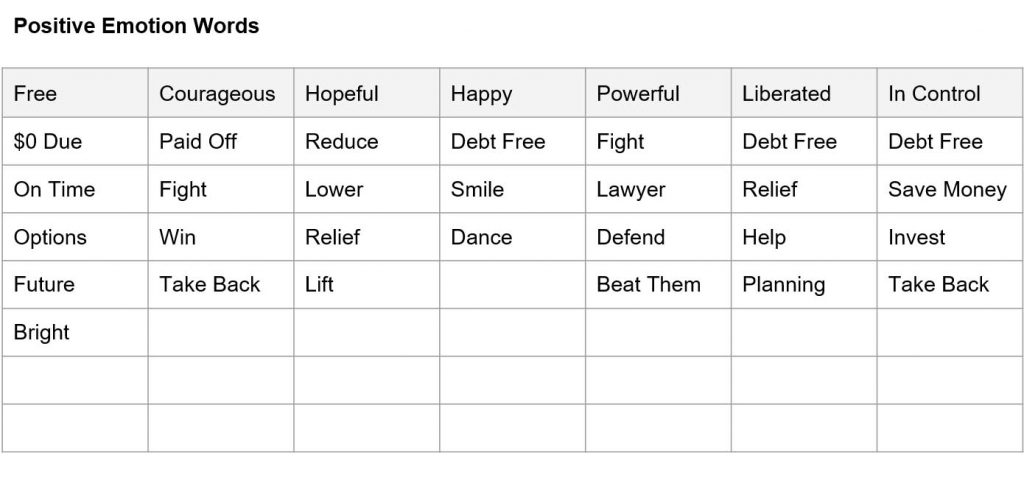
Creating Positive Emotions
We want to offer them relief and the feeling of these emotions if they call us. Like, “If you call us, we’ll set you free, baby. Your future is bright, and you have options! Fight, win, and take back your life by finally paying off everything.”
When you say this, they realize that they’re going to have to pay it off, they are going to have to deal with it if they want that feeling of courage. The negative emotions don’t disappear when we talk about positive ones because they’re ten times more powerful.
Hopeful: “Reduce interest, lower your debt, and lift yourself up.” Happy: “Smile and dance, living your new debt-free life!” Powerful: “Our expert lawyers will fight on your behalf.” Liberated: “Get the help and planning you need to live a debt-free life.” And, in control: “Save your money, invest in your future, and take your life back. Take back your life.”

All I did was take those words that we put that triggered those emotions and tossed them into phrases. I put a couple of them from each into a phrase, and just added some contractions, turned it into an English sentence, and bam! Now, we’ve got a trigger sentence. We’re going to trigger emotions in people.
Combining Phrases for Short Form Copy
Then what we do is we combine these because in debt, specifically, in a lot of campaigns, first we’re going to offer the problem, then we want to provide the solution. So, I’m going to take two of my phrases from each and just put them in sentence form with a call to action. Now, these are short-form. You’ve got to do it short; you don’t have a lot of space? It’s effortless.

“Is crushing pressure of due dates, late fees, interest, and penalties ruining your life? Your future is bright, and you have options! Call 800-123-4567 now for a free consultation!” That, right there, ladies and gentlemen, is excellent copy that works with a process to make it.
Next one. “Your phone is ringing off the hook, but you hide the screen, knowing you can’t pay. It’s time to fight, win, and take your life back by finally paying off everything. Call 800-123-4567 now for a free consultation!” Problem, solution, call to action in copy, based on emotions we want people to feel when they read our advertisement to get them to take an action that we tell them, with the call to action, to do.
Combining Phrases for Long Form Copy
Are you combining it for long-form? It’s the same thing. You simply take more of the phrases and combine them on both sides. “Do you feel trapped and alone, drowning in a prison of debt? That feeling of panic from rapidly approaching due dates keeps you from living the life you deserve while faceless collectors and endless late fees suffocate your future.” Anyone that’s in debt is going to feel something when they read that. They’re going to relate to it. One of those words is going to get them.

“There is a way out! Reduce your interest rates, lower your debt, and lift yourself up. In no time, you’ll be smiling and dancing, living your new debt-free life. Our expert lawyers will fight on your behalf. Call us now for the relief you need to take your life back! The call and consultation are free. Call 800-123-4567 now!”
The key to a great call to action? Tell them what to do and when to do it. Some people don’t do that. They’re like, “What? No. No, no. Call today. Call us when it’s convenient for you.” No! I want them to call right now, so tell them to call now! Why delay? I don’t even want to say the word “delay.” I don’t want it to prime in their head. Like, “I can delay, even though he told me now.” No! “Pick up the phone, dial our number, and get out of debt now!”
Using and Finding Images for Creating Emotions
That, my friends, is the entire process of weaving emotions into copy for successful advertising, and it applies to every single ad platform that’s out there. The process works the same way for images. I’m not going to spend a lot of time on this because it’s not that complicated:
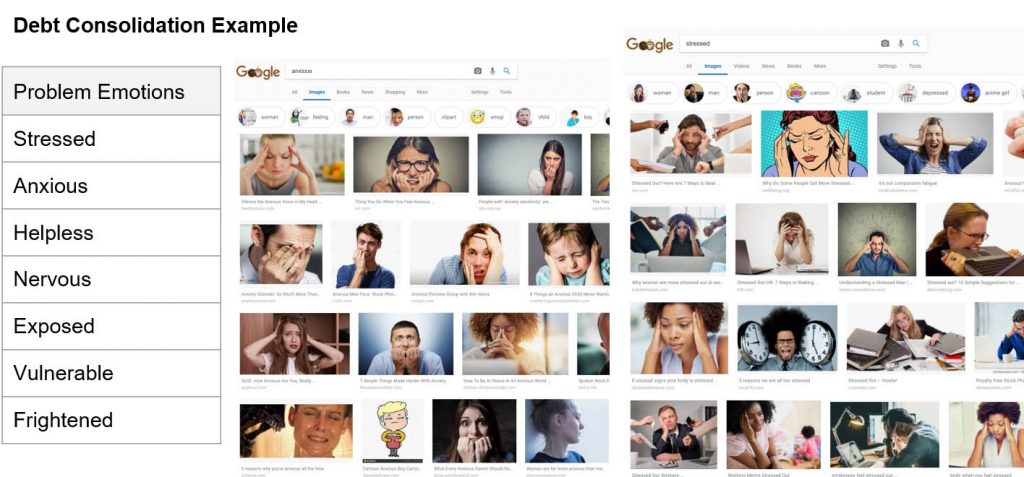
Let’s go back to the debt consolidation example and let’s take a look at it. Guys, this is so easy and the fact that no one does it, it blows my mind.
What do we do? We take the emotions we want people to feel, and we plug them into Google Images, and it gives us a list of images that show people in that emotional state. How hard is this? Why are ads so crappy? It makes no sense to me!
So, what do you do? What do you do? I’m going to take the copy I just wrote, and I’m going to save almost every single image on this page. I’m probably wouldn’t do the guy with the clocks, but, yeah, I would. I’d do the guy with the clocks. So, if we were doing Facebook ads, I wouldn’t do — Well, actually, I probably would the Sigourney Weaver with the alien in there. My gosh! Okay.
If you search the emotion you want people to feel in Google Images and then save almost every image and split test your copy with all these different images, you’re going to find the one that works the best, probably on your first try. I mean, if you’re going to do a Facebook campaign with images, images are 80% of it. The text is 20%. If you use text as I did, you’ll probably win.


